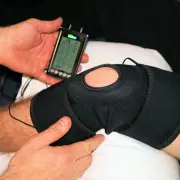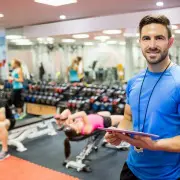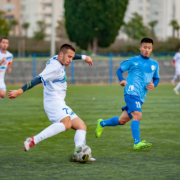Taking Out Some Steam: 6 Things That Can Help You
Life, being as it is, has a way of compressing us down into tiny little units of pure angst and negative energy. Obviously, that might be a tad hyperbolic and not the case for everyone, but by and large, life has a way of getting you down. This might be frustration from work, family life making you feel trapped, or really anything that touches the part of your being that makes you feel like you want to put all of your belongings up for sale and go and live in a cave.
However, you and I both know that this is not a healthy way to live life and consequently, it’s essential to decompress and let off steam from time to time in order to avoid it building up and causing a range of pretty adverse outcomes. Luckily, there are numerous things you can do to achieve this, of which I will explore six of the very best, most cathartic options available to humankind!
I
Relax And Let The Healing Powers Of Nature Heal Your Stress
When you read that heading, you might take it to mean going outside and breathing in the fresh air. While you are right to a certain degree, that is mentioned later in the post. This initial point might be something you have never even considered, but perhaps you might find it conducive to relaxation and good mental health. Cannabis has long been used by people from all walks of life thanks to its various “unique” properties that can make you feel comfortable and happier.
In addition, you don’t have to inhale any acrid smoke if you don’t want to because there are many different options for how to consume it. For instance, you could try these Delta-9 gummies, which will give you the desired effects you’re looking for without the hassle of rolling a joint or any expensive equipment. Speaking of equipment, you can also opt for vaping, which provides very similar effects to smoking but uses vapor rather than smoke, thus bypassing any unpleasant effects it might have on your throat and lungs.
Hit The Gym To Release Pent-Up Energy In A Beneficial Manner
Perhaps the best way to release your pent-up energy is to go to the gym and hit the weights. In reality, you don’t need to pump iron to release your energy; pretty much any exercise that makes you sweat will do the trick. However, if you are really stressed for any particular reason, you may want to take things a step further and look for a gym offering boxing lessons. You will be amazed at how utterly therapeutic it is to beat the heck out of a punchbag (not to mention the health benefits you will see from a few sessions)
Get Out And Enjoy The Outdoors On A Regular Basis
Now we get onto the obligatory part about nature! The best part is that you can choose how often and what activities you participate in. For example, you could opt for a standard walk around the block each morning or go full-on and gear up for a weekly hike around your local trails. However, the key is to remain consistent and make it a regular part of your life. Moreover, if you get good at something, be it kayaking, hiking or swimming, etc., you could turn it into a hobby, which also leads nicely to the next point.
Find A Hobby To Get Your Teeth Into
A hobby is anything you enjoy doing and enables you to escape the mundanity of life and into a realm that you control and understand. Many people mistakenly believe they do not have any hobbies or interests they can pursue. However, a hobby can be anything you genuinely enjoy.
Journaling Can Help You Say Things You Might Regret Saying Out Loud
Journaling has been a mainstay of philosophers, adventures, poets, creators, and anyone interested in laying down their thoughts onto paper. Saying things in writing that you might not feel comfortable saying out loud can be both liberating and revealing. You might be tempted to do this digitally, but there is nothing quite like putting pen to paper and keeping an analog version of your thoughts.
Get Creative And Release Your Inner Artist
It’s possible that you’re feeling frustrated because you can’t express your imaginative ideas. This is more common than you think, particularly for those with mundane careers or repetitive lifestyles. Releasing your inner artist can make a massive difference to your state of mind and can eventually change your thought processes from the negative to the positive.
It’s common to feel angry and discontented from time to time, but the key is finding the correct release valve to let off excess steam. All of the ideas mentioned here are perfect for this task and, in most cases, require little effort and investment.





